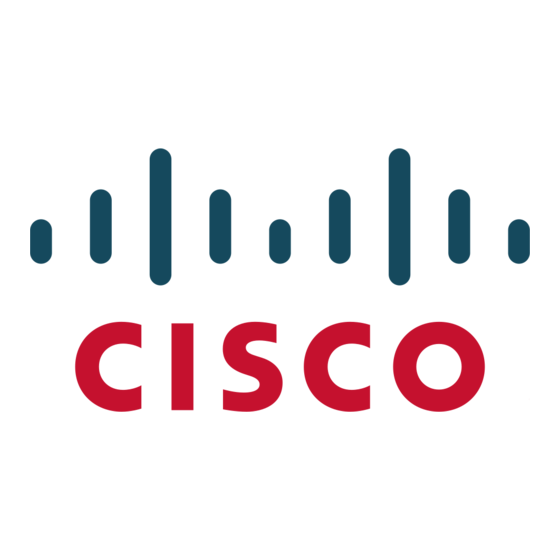Cisco 7513 Series Arkusz danych
Przeglądaj online lub pobierz pdf Arkusz danych dla Serwer Cisco 7513 Series. Cisco 7513 Series 11 stron. Chassis replacement
Również dla Cisco 7513 Series: Skrócona instrukcja obsługi (44 strony), Instrukcja wymiany (26 strony), Podręcznik (30 strony), Utrzymanie (20 strony), Instrukcja wymiany (19 strony), Instrukcja wymiany (22 strony)

All contents are Copyright © 1992–2007 Cisco Systems, Inc. All rights reserved. This document is Cisco Public Information.
Cisco 2600XM and 7500 Series-Based IP Transfer Point
®
The Cisco
IP Transfer Point (ITP) is a comprehensive and flexible solution for transporting
Signaling System 7 (SS7) traffic over traditional time-division multiplexing (TDM) networks or
advanced SS7-over-IP (SS7oIP) networks. The Cisco IP Transfer Point supports traditional,
advanced, and combined traditional/advanced networks, so mobile and fixed telecom operators
can migrate to more cost-efficient IP networks that support their business goals.
The Cisco ITP offers the complete feature set found in traditional signaling transfer points (STPs).
When operating in a TDM environment, the Cisco ITP provides superior value for transporting SS7
traffic over traditional TDM networks.
Using the standards developed by the IETF's Signaling Transport (SIGTRAN) working group, in an
SS7oIP environment, the Cisco ITP connects to traditional SS7 nodes or IP-enabled signaling
nodes and offloads this SS7 traffic to reliable and cost-efficient IP networks, thus freeing capacity
and ports on the existing and costly SS7 network. The Cisco ITP is also capable of operating in an
environment that interworks TDM and SS7oIP.
Additionally, by incorporating the SIGTRAN working group's Message Transfer Part Layer 3
(MTP3) User Adaptation Layer (M3UA) and Signaling Connection Control Part (SCCP) User
Adaptation Layer (SUA) standards, the Cisco ITP provides complete signaling gateway functions
between traditional TDM networks and IP-enabled signaling endpoints.
The Cisco ITP thus provides superior value over traditional SS7 transport solutions while providing
the infrastructure for the next generation of signaling transport.
Important features and benefits of the Cisco ITP include:
Signaling infrastructure cost reduction
●
Superior value and flexible scalability for signaling-capacity expansion, for TDM or IP
●
Integrated, leading IP routing features, including IP WAN media support and quality of
●
service (QoS)
Reliability and performance characteristics demanded by signaling infrastructures
●
High-speed link (HSL) support
●
Traditional STP feature set, including global title translation (GTT) and gateway screening
●
Open industry standards: Message Transfer Part 2 (MTP2) User Peer-to-Peer Adaptation
●
Layer (M2PA), M3UA, and SUA
IP investment protection
●
Portfolio of industry-leading traditional SS7 and SS7oIP solution partners
●
Mobile Application Part (MAP) gateway services for wireless LAN (WLAN) subscriber
●
identity module (SIM) authentication and authorization
Advanced Short Message Service (SMS) multilayer routing (MLR)
●
Gateway STP functions, including concurrent multiple variants and conversion
●
Data Sheet
Page 1 of 11
